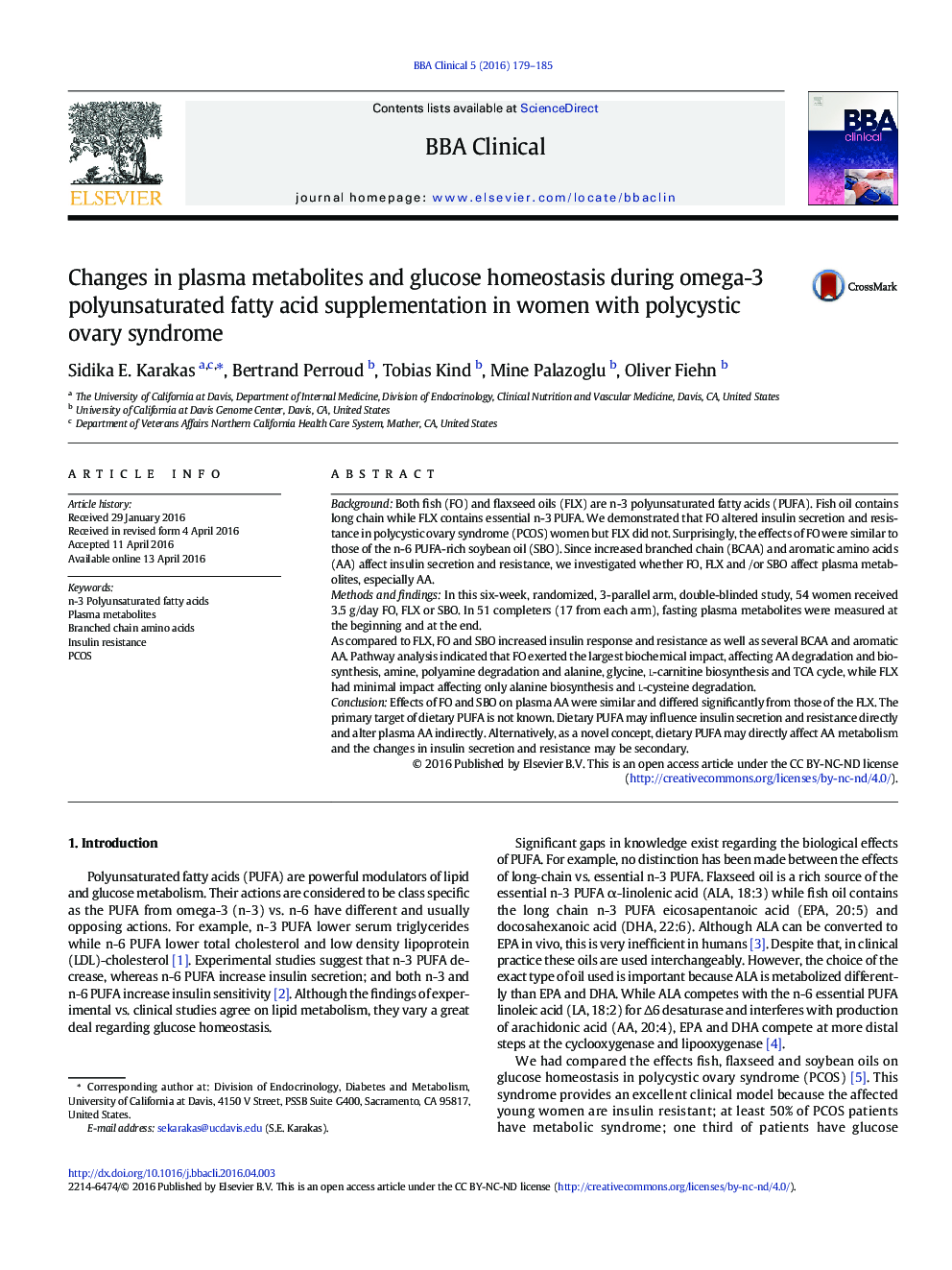| کد مقاله | کد نشریه | سال انتشار | مقاله انگلیسی | نسخه تمام متن |
|---|---|---|---|---|
| 2773103 | 1567897 | 2016 | 7 صفحه PDF | دانلود رایگان |
• Increased serum branched chain amino acids (BCAA) and aromatic amino acids are associated with insulin resistance and type 2 diabetes.
• Although both fish oil (FO) and flaxseed oil (FLX) are n-3 PUFA, FO contains the long chain, while FLX contains the essential n-3 PUFA.
• We compared the effects of different PUFAs on plasma metabolites in women with insulin resistance.
• Fish oil, but not FLX, increased plasma BCAA, and insulin resistance and secretion, indicating differential effects of essential vs. long chain n-3 PUFA.
• It is possible that effects of FO on insulin resistance and secretion may have been indirect, through its actions on BCAA metabolism.
BackgroundBoth fish (FO) and flaxseed oils (FLX) are n-3 polyunsaturated fatty acids (PUFA). Fish oil contains long chain while FLX contains essential n-3 PUFA. We demonstrated that FO altered insulin secretion and resistance in polycystic ovary syndrome (PCOS) women but FLX did not. Surprisingly, the effects of FO were similar to those of the n-6 PUFA-rich soybean oil (SBO). Since increased branched chain (BCAA) and aromatic amino acids (AA) affect insulin secretion and resistance, we investigated whether FO, FLX and /or SBO affect plasma metabolites, especially AA.Methods and findingsIn this six-week, randomized, 3-parallel arm, double-blinded study, 54 women received 3.5 g/day FO, FLX or SBO. In 51 completers (17 from each arm), fasting plasma metabolites were measured at the beginning and at the end.As compared to FLX, FO and SBO increased insulin response and resistance as well as several BCAA and aromatic AA. Pathway analysis indicated that FO exerted the largest biochemical impact, affecting AA degradation and biosynthesis, amine, polyamine degradation and alanine, glycine, l-carnitine biosynthesis and TCA cycle, while FLX had minimal impact affecting only alanine biosynthesis and l-cysteine degradation.ConclusionEffects of FO and SBO on plasma AA were similar and differed significantly from those of the FLX. The primary target of dietary PUFA is not known. Dietary PUFA may influence insulin secretion and resistance directly and alter plasma AA indirectly. Alternatively, as a novel concept, dietary PUFA may directly affect AA metabolism and the changes in insulin secretion and resistance may be secondary.
Figure optionsDownload as PowerPoint slide
Journal: BBA Clinical - Volume 5, June 2016, Pages 179–185
